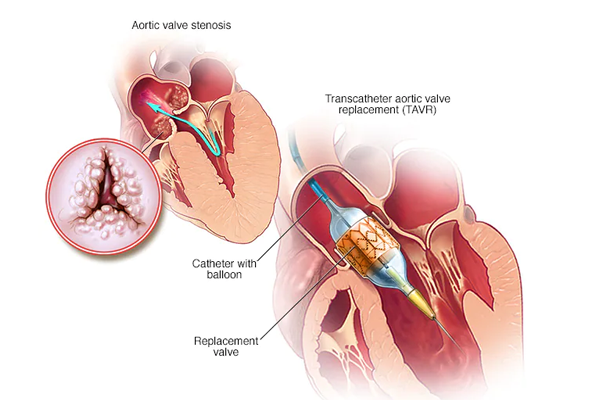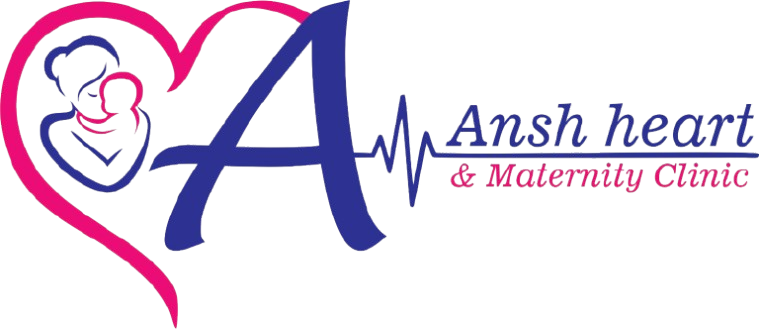
Non-Surgical Valve Interventions are advanced, minimally invasive procedures used to treat various types of heart valve diseases. These procedures are alternatives to traditional open-heart surgery, offering a faster recovery time and fewer complications. Common non-surgical valve interventions include Transcatheter Aortic Valve Implantation (TAVI), Balloon Valvuloplasty (or Balloon Valvuloplasty of Aortic, Mitral, and Pulmonary Valves), among others. These techniques have revolutionized the treatment of heart valve diseases, especially in elderly or high-risk patients who are not candidates for traditional surgery.
1. Transcatheter Aortic Valve Implantation (TAVI):
TAVI, also known as Transcatheter Aortic Valve Replacement (TAVR), is a minimally invasive procedure used to treat aortic stenosis, a condition where the aortic valve narrows and restricts blood flow from the heart to the rest of the body. This narrowing of the aortic valve can lead to symptoms like shortness of breath, chest pain, fainting, and fatigue, and, if left untreated, can be life-threatening.
How TAVI Works:
- Catheter Insertion: TAVI is typically performed through a catheter inserted into a large artery (most commonly through the femoral artery in the groin, but alternative access points like the subclavian artery, transapical, or transaortic approaches are also possible).
- Valve Replacement: A balloon is used to expand the narrowed valve opening, and a new, bioprosthetic valve (made of tissue) is delivered via the catheter and positioned inside the diseased aortic valve. The new valve takes over the function of the old valve, allowing normal blood flow.
- No Need for Open Surgery: This procedure eliminates the need for open-heart surgery, significantly reducing the risk and recovery time.
Benefits of TAVI:
- Minimally Invasive: No need for large chest incisions or heart-lung machines, making recovery faster and less painful.
- Ideal for High-Risk Patients: TAVI is particularly beneficial for elderly or high-risk patients who are not candidates for traditional surgical valve replacement.
- Faster Recovery: Most patients are able to return to their normal activities within a few days to weeks after the procedure.
- Improved Symptoms and Survival: Studies have shown that TAVI can improve survival and reduce symptoms of aortic stenosis in appropriate patients.
Risks of TAVI:
- Vascular Complications: Since the procedure involves inserting a catheter through a large artery, there is a risk of bleeding or damage to the blood vessels.
- Stroke: The procedure carries a small risk of stroke due to the release of debris during valve deployment.
- Valve Malfunction: There’s a risk that the new valve may not function properly or may become narrowed again over time.
- Infection: As with any invasive procedure, there’s a risk of infection at the catheter insertion site.
2. Balloon Valvuloplasty (Balloon Valvuloplasty of Aortic, Mitral, and Pulmonary Valves):
Balloon Valvuloplasty is a procedure used to treat valvular stenosis, where a heart valve becomes narrowed and obstructs blood flow. Balloon valvuloplasty can be performed on various heart valves, including the aortic, mitral, and pulmonary valves, and is typically used in patients who are not candidates for surgery or in cases where surgery needs to be delayed.
How Balloon Valvuloplasty Works:
- Catheter Insertion: A catheter with a balloon at its tip is inserted into a blood vessel (usually in the groin) and guided to the site of the narrowed valve.
- Balloon Inflation: Once the catheter is in place, the balloon is inflated, which stretches and opens the narrowed valve. The procedure helps to improve the blood flow through the heart by creating more space in the valve opening.
- Temporary Solution: Balloon valvuloplasty may not provide a permanent solution and can sometimes require additional interventions, such as surgery or further ballooning.
Types of Balloon Valvuloplasty:
- Aortic Balloon Valvuloplasty: Used to treat aortic stenosis, where the aortic valve is narrowed.
- Mitral Balloon Valvuloplasty: Used for mitral stenosis, where the mitral valve, which controls blood flow between the left atrium and left ventricle, becomes narrowed. This condition is most commonly caused by rheumatic heart disease.
- Pulmonary Balloon Valvuloplasty: This procedure treats pulmonary stenosis, a condition where the pulmonary valve (which controls blood flow from the right ventricle to the lungs) becomes narrowed, restricting blood flow.
Benefits of Balloon Valvuloplasty:
- Minimally Invasive: The procedure does not require open-heart surgery, resulting in a faster recovery time and less risk of complications compared to traditional surgery.
- Relatively Quick Recovery: Patients often experience significant improvements in symptoms, such as shortness of breath or fatigue, soon after the procedure.
- Alternative to Surgery: Balloon valvuloplasty can serve as a temporary or long-term solution for some patients, particularly those who are not suitable candidates for surgery.
- Effective in Certain Conditions: The procedure is often effective in patients with mitral stenosis caused by rheumatic fever and pulmonary stenosis.
Risks of Balloon Valvuloplasty:
- Regurgitation: In some cases, the procedure can cause the valve to leak, leading to valve regurgitation, where blood flows backward into the heart.
- Re-stenosis: The valve may become narrow again over time, requiring repeat ballooning or a more definitive surgical procedure like valve replacement.
- Vascular Complications: There is a small risk of injury to the blood vessels during the catheter insertion.
- Arrhythmias: The procedure may cause abnormal heart rhythms, which might need to be managed with medications or other interventions.
Comparison of TAVI and Balloon Valvuloplasty:
Feature | Transcatheter Aortic Valve Implantation (TAVI) | Balloon Valvuloplasty |
Indication | Primarily used for aortic stenosis in high-risk patients | Used for aortic, mitral, and pulmonary stenosis |
Procedure | Involves implantation of a new valve via a catheter | Involves inflating a balloon to widen the narrowed valve |
Minimally Invasive | Yes | Yes |
Duration | Longer procedure (1-2 hours) | Shorter procedure (30-60 minutes) |
Effectiveness | More effective and longer-lasting solution | May require repeat procedures or surgery |
Risk of Valve Complications | Low risk of valve malfunction, but possible for misplacement | Risk of regurgitation (valve leakage) or re-stenosis |
Post-Procedure Recovery | Rapid, with a few days of hospitalization | Faster recovery, with most patients discharged the same day |
Target Patient Population | Elderly or high-risk patients who are not candidates for surgery | Patients who are not surgical candidates or as a temporary solution |
Risk of Stroke | Small risk of stroke during procedure | Lower risk, though still possible in rare cases |



